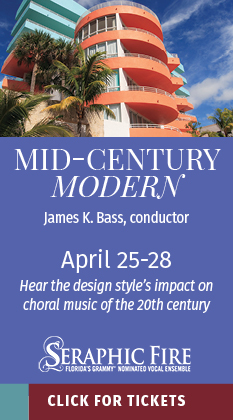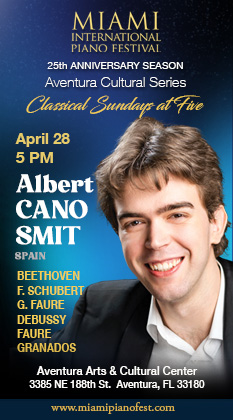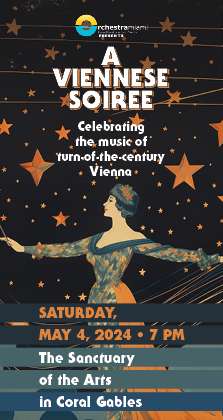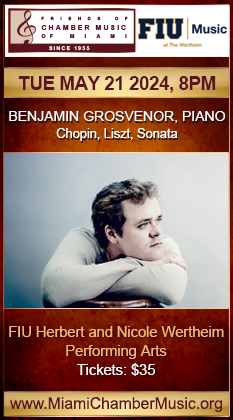Guitarist Karadaglić brings subtle artistry to Cleveland Orchestra’s showpiece program
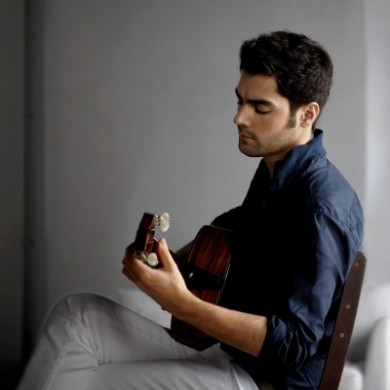
MIlos Karadaglic performed music of Rodrigo Friday night with the Cleveland Orchestra. Photo: DG/ Margaret Malandruccolo
While the program for Friday’s opening concert of the Cleveland Orchestra’s annual Miami residency was lightweight, the evening of orchestral showpieces displayed the ensemble at its considerable best. Still the concert’s most significant event was the South Florida debut of guitarist Miloš Karadaglić who turned an oft-played warhorse into a fresh listening experience.
A major recording contract with Deutsche Grammophon and international touring have catapulted the handsome Montenegro-born guitarist into the spotlight. More than merely an easily promotable celebrity, Karadaglić is an exceptional musician.
Joaquin Rodrigo’s Concierto de Aranjuez has been played thousands of times since its 1940 premiere. (Interestingly the Clevelanders gave the American premiere of the score in 1959 with Ray de la Torre.) Yet when played with the artistry lavished on it by Karadaglić, however, the piece can still delight the ear.
The opening chords and strumming were projected with clarity and admirable restraint. Karadaglić breezed through the runs and elegant ornaments, his technique rock-solid. The famous Adagio was finely etched, sensual and romantic without heaviness. Karadaglić’s fleet, energetic reading of the finale captured the brightness of the off-kilter melodies.
Discreetly amplified to carry in the vast spaces of the Arsht Center’s Knight Concert Hall, Karadaglić’s Greg Smallman guitar was a fine instrument with particularly deep and distinct bass notes. His wonderfully virile rendition managed to clear away the clichés and mannerisms that afflict many performances of the Aranjuez.
Giancarlo Guerrero, principal guest conductor for the orchestra’s Miami residency, is an expert accompanist and he deftly blended and balanced Rodrigo’s piquant wind and string writing without overpowering his soloist. Rhythms were crisp and snappy, the unison violins sounded lustrous and brash trumpet interjections in the finale perked up the ears. One can only wonder why Karadaglić’s fine performance was accorded only one curtain call by an audience that loudly cheered the flashier orchestral scores.
Like Gustav Holst (composer of The Planets which Guerrero led in Miami last season), Ottorino Respighi anticipated the modern motion picture soundtrack with his extravagant orchestral tone poems. The Fountains of Rome, the first and most artful of Respighi’s Roman trilogy, displayed the evening’s largest orchestral complement with two harps, celesta, expanded strings, brass and percussion and eight double basses filling the stage.
Guerrero managed to bring out the poetry amid Respighi’s wide-screen panorama of orchestral colors. The soft string sounds and evocative wind tints with celesta exquisitely blended into the orchestral fabric evoked night turning to dawn in the opening portrait of the Villa Giulia fountain. Delicate pianissimos and fine blends of tolling bells, celesta and harps over whispered strings encapsulated the Technicolor sunset of the Villa Medici finale.
The program opened and closed with two portraits by Russian composers of street music and dance in foreign lands. One horn blooper aside, Tchaikovsky’s Capriccio Italien featured powerhouse brass, Guerrero ratcheting up the final tarantella to fever pitch.
The orchestra’s superb first chairs shone to splendid effect in Rimsky-Korsako’s Capriccio Espagnol with flawless clarinet scales and superb solo moments from cello, harp, horn, flute and English horn. Concertmaster William Preucil managed to top his colleagues, bringing agility and virtuosity to the numerous violin solos and cadenzas. Opening at a brisk pace, Guerrero rendered the Latin-tinged melodies and dance rhythms at full thrust.
The Cleveland Orchestra repeats the program 8 p.m. Saturday at the Arsht Center in Miami. 305-949-6722; arshtcenter.org.
Posted in Performances
Leave a Comment
Sat Nov 15, 2014
at 12:01 pm
No Comments
